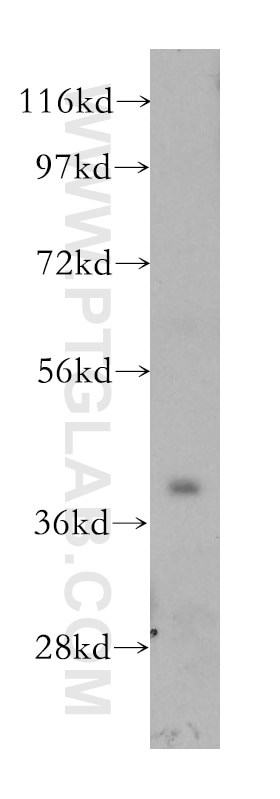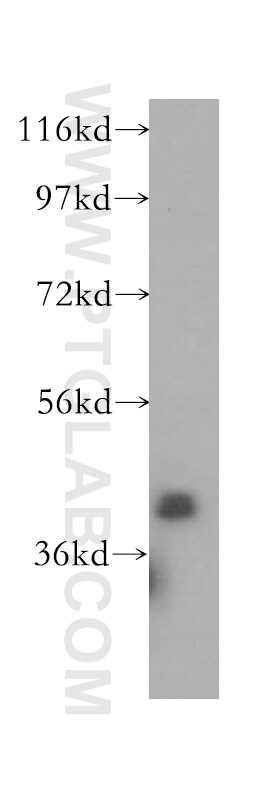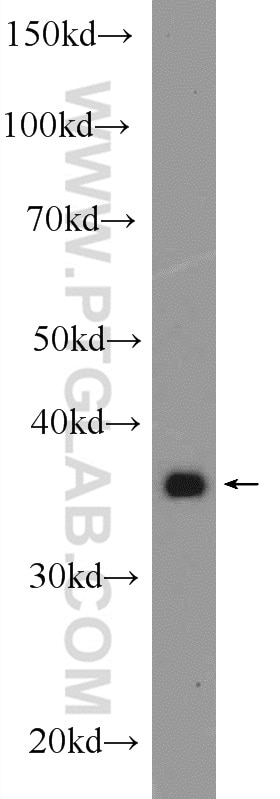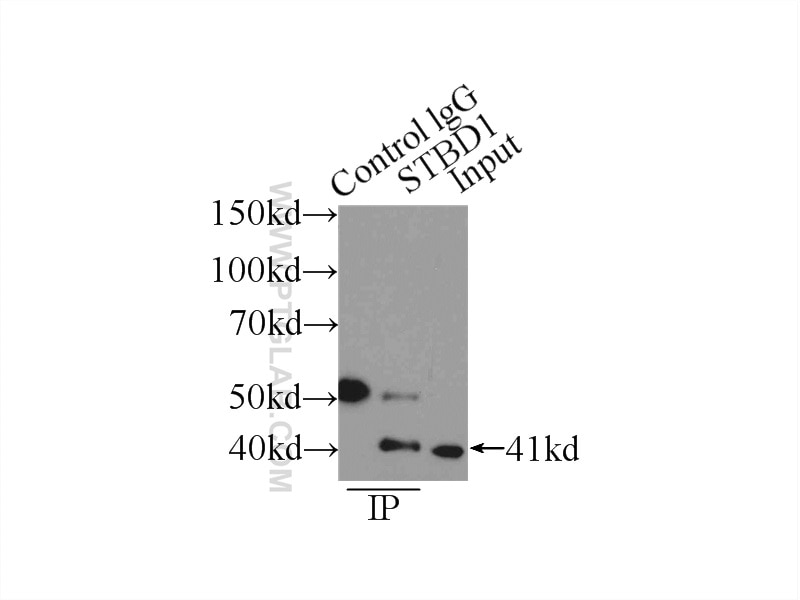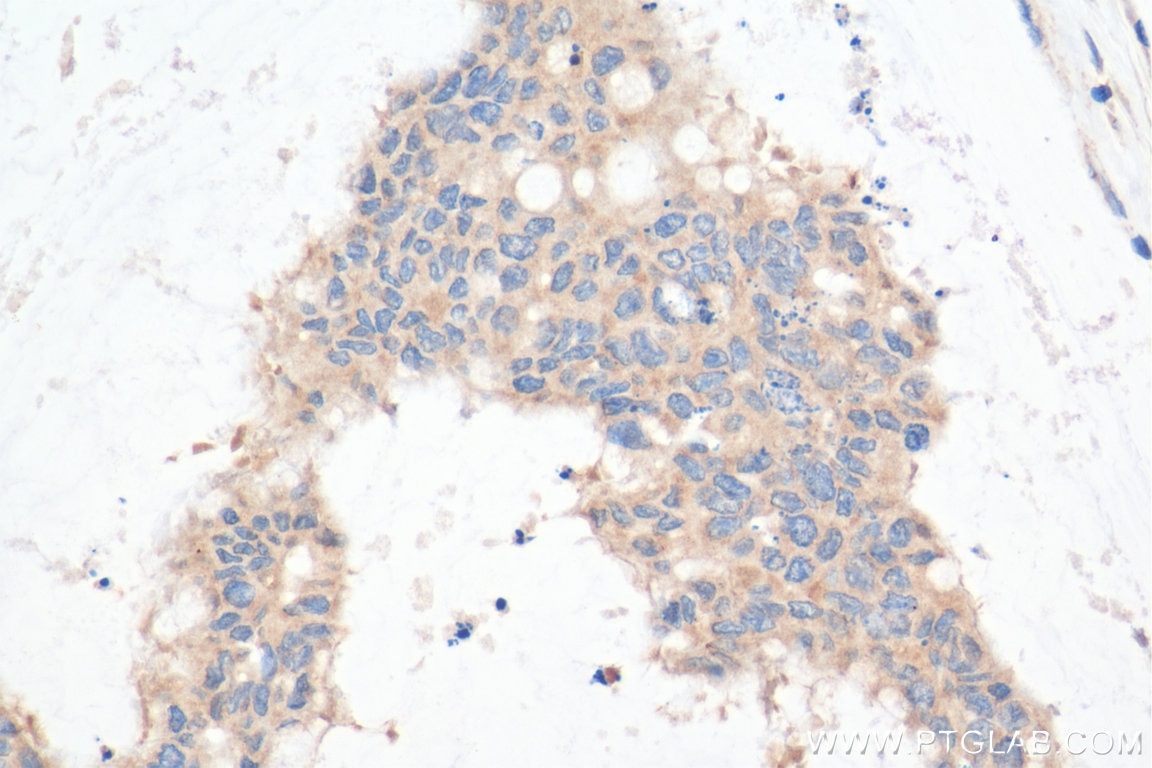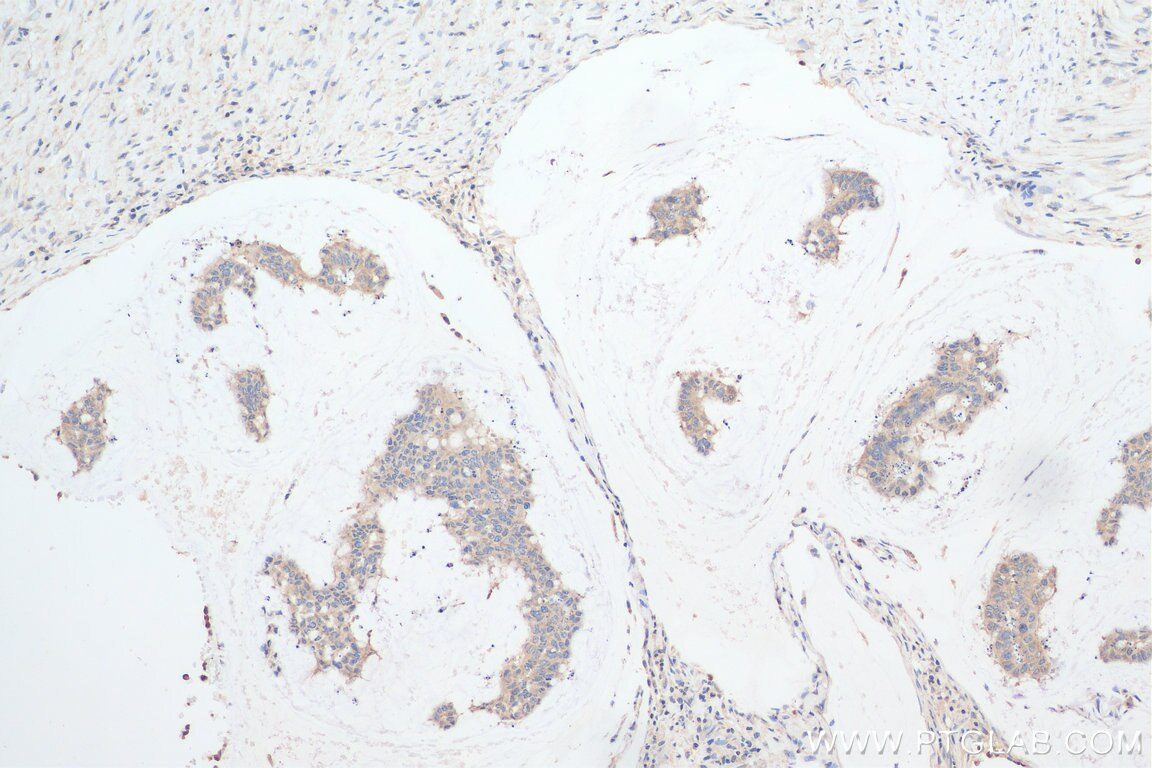- Featured Product
- KD/KO Validated
STBD1 Polyklonaler Antikörper
STBD1 Polyklonal Antikörper für WB, IP, IHC, ELISA
Wirt / Isotyp
Kaninchen / IgG
Getestete Reaktivität
human, Maus und mehr (2)
Anwendung
WB, IP, IF, IHC, ELISA
Konjugation
Unkonjugiert
Kat-Nr. : 11842-1-AP
Synonyme
Galerie der Validierungsdaten
Geprüfte Anwendungen
| Erfolgreiche Detektion in WB | Maus-Skelettmuskelgewebe, A549-Zellen, HeLa-Zellen |
| Erfolgreiche IP | A549-Zellen |
| Erfolgreiche Detektion in IHC | humanes Kolonkarzinomgewebe Hinweis: Antigendemaskierung mit TE-Puffer pH 9,0 empfohlen. (*) Wahlweise kann die Antigendemaskierung auch mit Citratpuffer pH 6,0 erfolgen. |
Empfohlene Verdünnung
| Anwendung | Verdünnung |
|---|---|
| Western Blot (WB) | WB : 1:500-1:2000 |
| Immunpräzipitation (IP) | IP : 0.5-4.0 ug for 1.0-3.0 mg of total protein lysate |
| Immunhistochemie (IHC) | IHC : 1:50-1:500 |
| It is recommended that this reagent should be titrated in each testing system to obtain optimal results. | |
| Sample-dependent, check data in validation data gallery | |
Veröffentlichte Anwendungen
| KD/KO | See 3 publications below |
| WB | See 10 publications below |
| IHC | See 1 publications below |
| IF | See 6 publications below |
| IP | See 2 publications below |
Produktinformation
11842-1-AP bindet in WB, IP, IF, IHC, ELISA STBD1 und zeigt Reaktivität mit human, Maus
| Getestete Reaktivität | human, Maus |
| In Publikationen genannte Reaktivität | human, Huhn, Maus, Ratte |
| Wirt / Isotyp | Kaninchen / IgG |
| Klonalität | Polyklonal |
| Typ | Antikörper |
| Immunogen | STBD1 fusion protein Ag2481 |
| Vollständiger Name | starch binding domain 1 |
| Berechnetes Molekulargewicht | 41 kDa |
| Beobachtetes Molekulargewicht | 35-43 kDa |
| GenBank-Zugangsnummer | BC022301 |
| Gene symbol | STBD1 |
| Gene ID (NCBI) | 8987 |
| Konjugation | Unkonjugiert |
| Form | Liquid |
| Reinigungsmethode | Antigen-Affinitätsreinigung |
| Lagerungspuffer | PBS mit 0.02% Natriumazid und 50% Glycerin pH 7.3. |
| Lagerungsbedingungen | Bei -20°C lagern. Nach dem Versand ein Jahr lang stabil Aliquotieren ist bei -20oC Lagerung nicht notwendig. 20ul Größen enthalten 0,1% BSA. |
Hintergrundinformationen
STBD1 may have the capability to bind to carbohydrates. It functions as a glycogen receptor that tethers glycogen to autophagic membranes for delivery and breakdown in lysosomes. STBD1 appears molecular mass of 35-38 kDa band in mouse/rat tissues and 38-43 kDa in human tissue.
Protokolle
| Produktspezifische Protokolle | |
|---|---|
| WB protocol for STBD1 antibody 11842-1-AP | Protokoll herunterladen |
| IHC protocol for STBD1 antibody 11842-1-AP | Protokoll herunterladen |
| IP protocol for STBD1 antibody 11842-1-AP | Protokoll herunterladen |
| Standard-Protokolle | |
|---|---|
| Klicken Sie hier, um unsere Standardprotokolle anzuzeigen |
Publikationen
| Species | Application | Title |
|---|---|---|
Acta Pharmacol Sin Asiatic acid alleviates ischemic myocardial injury in mice by modulating mitophagy- and glycophagy-based energy metabolism. | ||
J Cell Sci Stbd1 promotes glycogen clustering during endoplasmic reticulum stress and supports survival of mouse myoblasts
| ||
Mol Endocrinol Transgenic muscle specific Nor-1 expression regulates multiple pathways that effect adiposity, metabolism and endurance. | ||
J Cell Sci Mouse Stbd1 is N-myristoylated and affects ER-mitochondria association and mitochondrial morphology. | ||
J Biol Chem Starch binding domain-containing protein 1/genethonin 1 is a novel participant in glycogen metabolism. |
